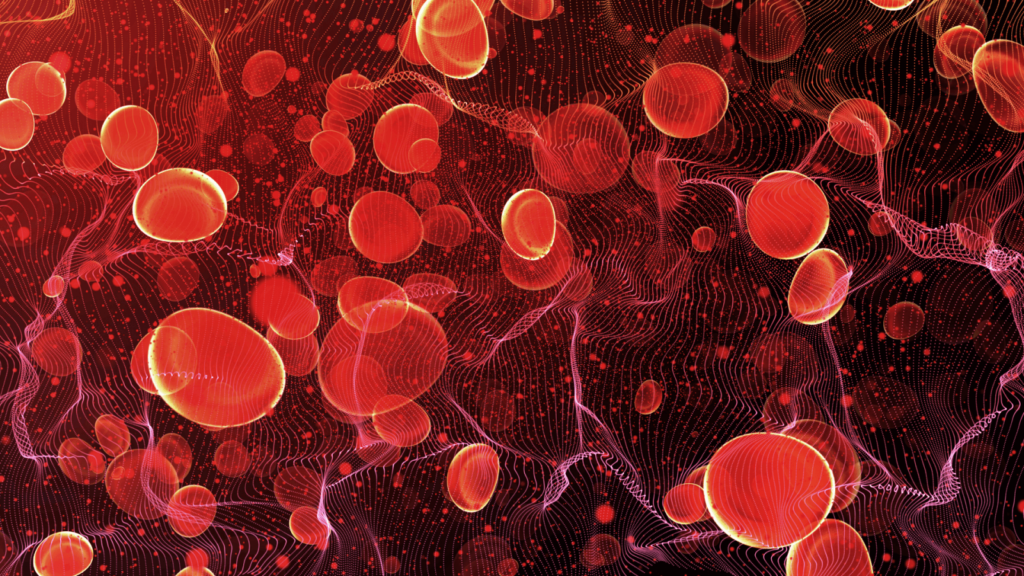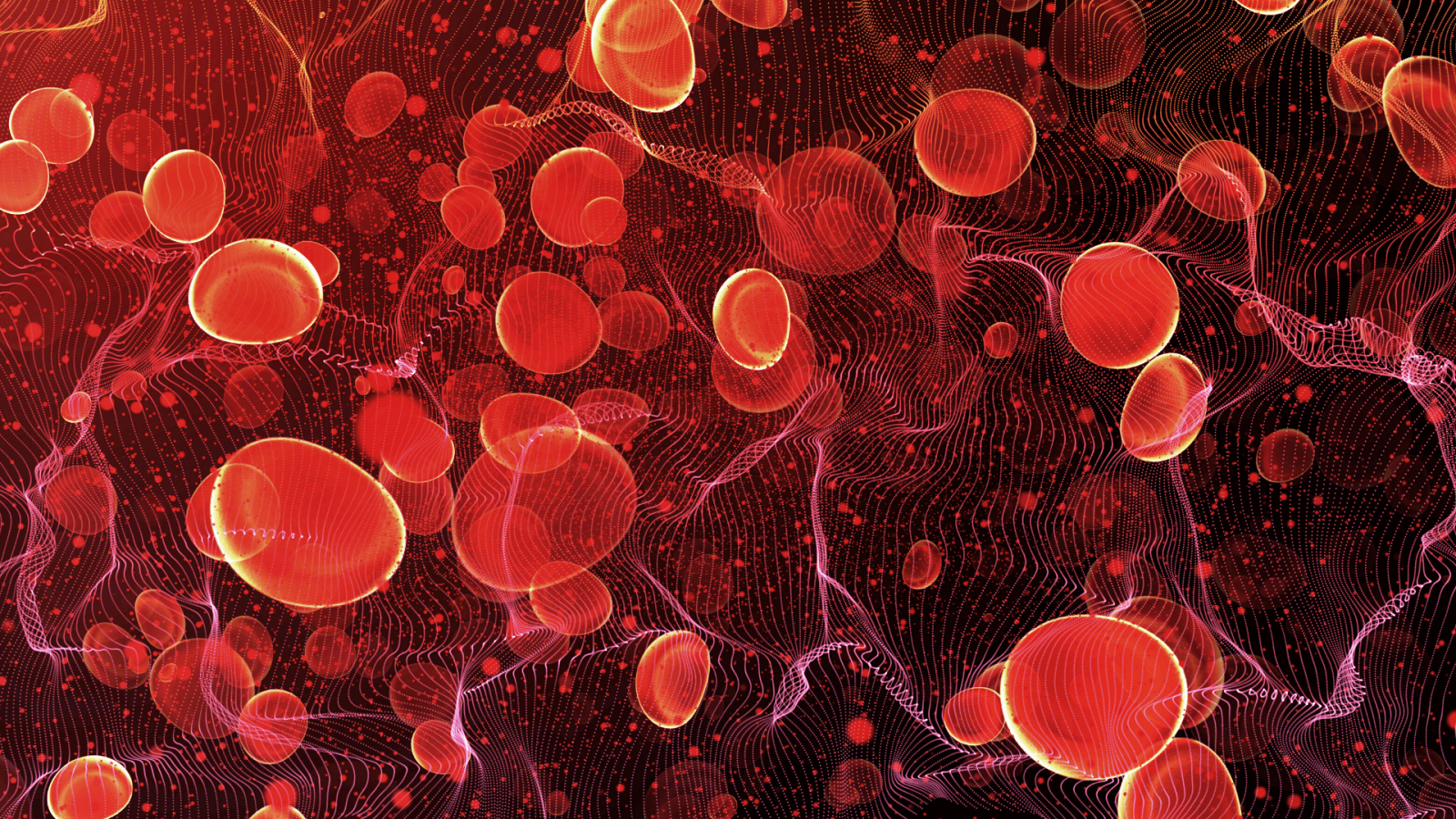Red cell distribution width (RDW) is the variation in the size of red blood cells in a blood sample. This variation is also called standard deviation (SD). Higher RDW standard deviation indicates that the size variation of red blood cells is more than expected.
RDW (Red Cell Distribution Width) SD High – Meaning, Causes And Cure.
The RDW can help discriminate between different kinds of Anemia, especially if more than one is present. To determine RDW, one must undergo the Red Cell Distribution Width Test. RDW is done as part of complete blood count, a common test used in health care to examine a wide range of individuals. Even if the RDW test is normal, it can be used to examine other conditions like an iron deficiency in expectant mothers.

A normal red blood cell has a standard diameter of six to eight micrometers. Any size beyond this means your RDW is high. This means that if your red cells are tiny on average but you have many microscopic cells, your RDW will increase. Likewise, if your red cells are large on average but you have a large number of very large cells, your red cell distribution width will be high. High RDW is associated with high mortality.
As a result, RDW is not used as a stand-alone measure to interpret a complete blood count. In the context of hemoglobin and mean corpuscular value, it instead provides shades of meaning.
Uses of RDW in health care
- To check for Anemia symptoms, including lightheadedness and weariness.
- To test persons who have a history of a red blood cell disorder such as thalassemia to help detect the reasons for Anemia (a broad fluctuation in the size of cells or a high RDW may occur when more than one form of Anemia is present).
- To diagnose cardiac disease (an elevated RDW is a strong predictor for eventual heart failure).
- To Prevent Anemia in pregnant women through screening for early iron deficiency.
- To check for vitamin B12 and folate deficiency early on before additional symptoms appear in the blood.
- To know when more blood tests (peripheral smear) are required.
- As a supplement to calculating disease risk or determining prognosis
How to calculate RDW?
RDW can be given as coefficient variation (CV) or standard deviation (SD); RDW-CV. It can also be calculated by the diving standard deviation of red blood cell volume by mean cell volume (MCV) times 100.
SD/ MCVx100
RDW test results with high RDW
After taking the test, the doctor compares RDW and MCV.the following result options indicate elevated RDW.
- When RDW is high but MCV is normal, it implies chronic liver disease, folate, B-12, or iron shortage.
- When RDW is high, but MCV is low, it’s a sign of microcytic Anemia or iron shortage.
- When RDW is high, but MCV is low, it’s a sign of chronic liver illness or macrocytic Anemia. It could also be a sign of a deficiency in folate or B-12.
Causes of high RDW
RDW is elevated in disorders and diseases that appear to be unrelated but influence blood cell creation and lifespan. The inflammatory, autoimmune, liver, renal, and cardiac disorders are among them. Continue reading to find out why having a high RDW is bad and how to improve your RDW.the following are causes of high RDW.
Heart disease
RDW appears to be a powerful predictor of heart failure in people with heart disease and the chance of getting heart disease in people with high blood pressure. People with a very high RDW are more likely than those with a lower RDW to have a heart attack. In HIV-positive persons, a high RDW may also help predict the risk of heart disease.
Cancer
People with blood-related cancer, colon cancer, lung cancer present a high Red cell distribution width. Many cancer-related variables, such as chronic inflammation and poor nutritional status, can interfere with red blood cell synthesis. RDW rises in cancer patients as the disease progresses and metastasis occurs.
Iron deficiency anemia
Lack of iron in the blood may cause elevated RDW. Also, iron deficiency leads to low blood cells causing Anemia. The cause of iron deficiency varies considerably based on a person’s age and gender. Nutritional deficits are the most common cause of iron deficiency anemia in children. Menstrual blood loss is the most common cause of iron insufficiency in menstruating women. Blood loss is the most common cause of iron deficiency in adult men and non-menstruating women. A bleeding ulcer in the stomach can cause the most common site for blood loss in the gut. A tumor in the intestines can cause bleeding in some situations.
Liver diseases
People suffering from liver diseases like hepatitis, liver cirrhosis, biliary cirrhosis, and liver cancer have increased RDW.
Inflammation
Inflammation and greater levels of inflammatory cytokines cause elevated RDW. Inflammatory cytokines reduce red blood cell synthesis, leading to higher RDW levels. Furthermore, oxidative stress, which is frequently associated with chronic inflammation, can shorten the lifetime of red blood cells and raise RDW readings.
Inflammation-related disorders such as celiac disease, inflammatory bowel disease, polycystic ovarian syndrome, and major depressive disorder are familiar sources of higher RDW.
Kidney disease
People with kidney disorders have a high RDW. The kidney produces a hormone called Erythropoietin, which is required for red blood cell production and maturation. Kidney disease causes abnormal production of this hormone, increasing RDW.
Sleeping disorders
People suffering from sleeping disorders like apnea have a higher RDW. Getting sleep for less than 8 hours causes elevated RDW. Also, those who oversleep are likely to have higher RDW.
Hereditary red blood cells disorders
Sickle cell anemia, thalassemia, and spherocytosis are examples of hereditary red blood cell abnormalities that can raise RDW. Red blood cells become malformed in all of these diseases. Patients with thalassemia can, however, have average RDW values.
Alcoholism
high RDW in alcoholics does not necessarily mean that one has liver disease. This one is because alcohol can be harmful to red blood cells.
Hemorrhage (bleeding)
Bleeding causes increased RDW. Bleeding reduces the red blood cell count hence elevating readings in RDW.
Blood transfusion
Vitamin B12 and folate deficiency
Vitamin B12 is an essential nutrient in red blood cell synthesis. Folic acid is also a major component of blood cells. Lack of these two nutrients leads to diseases like Anemia. Therefore, people with vitamin B12 and folate deficiency have a higher RDW.
Diabetes
People who have diabetes have a higher RDW. High blood sugar levels cause diabetes. Excess sugar in the blood hinders the synthesis of red blood cells
Cure for high RDW
The most important thing to do if you have a high RDW is to work with your doctor to figure out what’s causing it and treat any underlying issues. The lifestyle modifications described below are things you should talk to your doctor about. None of these methods should ever be used instead of what your doctor suggests or prescribes!
Balanced diet

To avoid vitamin deficits, eat a healthy and nutritious diet. It’s critical to have enough iron, folate, and vitamin B12 in your diet. Improved red blood cell production and lower RDW levels can be achieved by correcting nutritional deficits.
However, remember that nutritional deficiencies can also be caused by non-dietary factors such as gut difficulties (malabsorption). Simple dietary changes will not be enough to remedy the problem.
Regular Exercise
RDW levels are higher in people who do little or no physical activity. RDW can be improved with exercise, especially light-intensity physical activity. The higher the number of workout sessions, the lower chances of having elevated RDW.
Get adequate sleep
ensure you get adequate rest, but don’t go overboard. It is sufficient to sleep for 7-8 hours. Remember getting enough sleep is crucial for blood circulation.
Avoid smoking
Smoking increases RDW. Cigarettes have a toxic component that hinders red blood cell synthesis.
Avoid alcohol
Excessive consumption of alcohol can harm red blood cells. Furthermore, alcohol reduces the absorption of minerals, including vitamin B12 and folate, which are essential for red blood cell synthesis.
Medical procedure
A health expert puts a needle into your vein and drains blood through a tube into a bag or container in a procedure known as phlebotomy. You may need to repeat this operation until your RDW is near to normal. If you have polycythemia, a bone marrow disorder, your doctor may also prescribe hydroxyurea, a drug that slows the creation of red blood cells in your body. While using hydroxyurea, you should see your doctor frequently to ensure that your RDW does not increase too high.
Even when a person’s red blood cell count is normal, red cell distribution width (RDW) is a valuable tool for evaluating different types of Anemia and may have a wide range of applications. The importance of red blood cells in your body cannot be overstated. Your doctor will order a complete RBC count to examine your levels if they feel your red blood cell count is wrong. If you have a low count, your doctor may suggest a mix of dietary modifications, daily supplements, and medications to help you get it back to normal.
